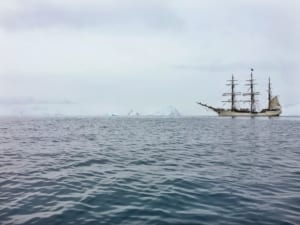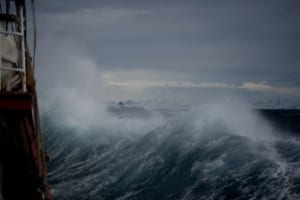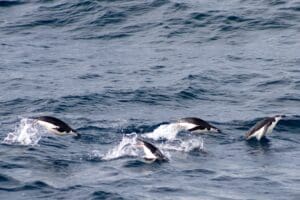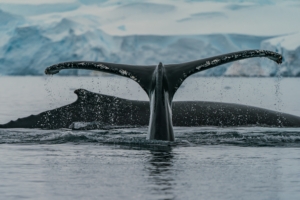Day 4 - Drake Passage + Reaching Antarctica!
History of the Drake Passage

Many decades after its discovery, a ship named the Eindracht made the first recorded successful voyage through the Drake Passage. Willem Schouten, a Dutch navigator, served as captain of this voyage in 1616. He also named Cape Horn on this journey. Despite the difficulties involved in navigating it, the Drake Passage proved to be an important part of future international trade routes in the 19th and early 20th centuries, prior to the opening of the Panama Canal in 1914.
Throughout history, the Drake Passage is known for its often turbulent seas. These conditions made it a very dangerous crossing for wooden sailing ships. However, this has changed with modern ship construction and technology. With the advent of sonar and advanced navigation systems, the journey is now much more accessible to travelers from across the globe. In December 2019, a team of rowers even achieved the first human-powered transit of the Drake Passage!
The Drake Passage on a Map, and ‘Rounding the Horn’
The Drake Passage is situated at the point where the Atlantic and Pacific oceans meet. This means that it is a massive convergence of waves, wind, and currents. Looking at it on a map, the Drake Passage is broad in area, around 620 miles in width. It is of particular interest to anyone wanting to voyage to Antarctica, because it extends from South America’s southernmost tip to the South Shetland Islands and the Antarctic Peninsula.
Cape Horn is the most southern headland, situated in the Tierra del Fuego archipelago in Chile. It indicates the northern boundary of the Drake Passage on a map. ‘Rounding the Horn’ refers to the navigation of vessels around Cape Horn itself. Stormy seas made the rounding of Cape Horn a difficult challenge for ships and their crews throughout history (especially for simpler sailing vessels), partly because the area is subjected to intense winds, rainfall, and seasonal sea ice. The opening of the Panama Canal meant many ships no longer had to complete this voyage around Cape Horn.
The Drake Passage is also a very deep body of water, with an average depth of 11,150 feet. The ocean floor is estimated at 15,700 feet deep around the southern and northern boundaries of the Passage.
Weather Conditions in the Drake Passage
Due to this convergence of oceans, the Drake Passage is a very unique climatic area. It is a transitional zone between the cooler, more humid, and subpolar conditions of Tierra del Fuego and the more frigid Antarctic. The region is therefore very dynamic, and cyclones can form in the warm Pacific before being swept into the Drake Passage. Despite the conditions, it is very common to make the journey through the Passage today. Modern technology helps forecast and navigate the weather much more easily!
The Journey to Antarctica: the ‘Drake Lake’ or ‘Drake Shake’
Though the Drake Passage is situated in one of the most remote parts of the world, it is one of the primary ways to reach Antarctica. In general, the journey takes approximately 36 hours from Ushuaia, Argentina (the southernmost city in the world). Around 75,000 people per year journey to Antarctica via sea voyage. The exciting experience of sailing this passageway is that of following in the footsteps of many of history’s greatest explorers.

However, the Drake Passage may well also be calm, which some people refer to as the ‘Drake Lake’. On many voyages, you can still experience placid waters as far as the eye can see. It is all a matter of ‘luck of the draw!’ Either way, it is a truly unforgettable way to access and discover the ice-covered continent of Antarctica – one of the most remarkable locations on our planet.
Drake Passage Wildlife

Reaching Antarctica!

Antarctica is still considered the last great wilderness on our planet, and for good reason! Its beauty and uniqueness have attracted explorers and inspired the imagination across history. Even ancient Greek scholars spoke of a mysterious southern continent long before its discovery.
Explorer and celebrated Antarctic expedition leader Ernest Shackleton once said, ‘We all have our own white south.’ The continent exists as an excellent metaphor for personal journeys and contextualizing our human nature. The voyage to Antarctica is a real bonding experience for teams of intrepid travelers.
More info: https://explorerspassage.com/chronicles/the-drake-passage/#drake-passage-location



Comments
Post a Comment